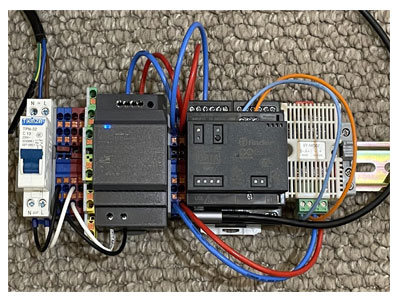Key Takeaway
To maintain Industrial Ethernet networks, start with regular network monitoring. Use tools to track performance, detect issues, and log events. Update firmware and software on switches, routers, and connected devices to fix vulnerabilities and improve reliability. Inspect cables and connections periodically to prevent damage or interference.
Another best practice is to ensure proper network segmentation using VLANs to isolate critical systems from general traffic. Backup configurations regularly and test failover systems like redundancy protocols to minimize downtime during failures. Keep the network clean by disabling unused ports and enforcing strong security measures, such as firewalls and access controls. These steps help maintain a stable and efficient Industrial Ethernet network.
Regular Inspection and Testing of Ethernet Components
Routine inspections and testing are fundamental to identifying and addressing potential issues before they escalate.
1. Visual Inspections: Periodically check cables, connectors, and switches for signs of wear, physical damage, or loose connections.
2. Signal Testing: Use tools like cable testers and time-domain reflectometers (TDR) to verify signal integrity and detect faults.
3. Performance Analysis: Monitor metrics like latency, packet loss, and bandwidth utilization to ensure optimal operation.
For instance, a factory might experience intermittent communication failures due to a damaged cable. Regular inspections would identify the issue early, allowing for timely replacement. Proactive testing reduces unexpected downtime and enhances network reliability.

Implementing Network Monitoring for Early Detection of Issues
Network monitoring tools are indispensable for maintaining Industrial Ethernet networks. They provide real-time insights into network performance and alert engineers to anomalies.
1. Continuous Monitoring: Tools like SNMP (Simple Network Management Protocol) and specialized software track traffic, detect faults, and monitor device health.
2. Alerts and Notifications: Configure systems to send instant alerts for issues like increased latency, bandwidth congestion, or device failures.
3. Historical Data Analysis: Analyze historical data to identify recurring patterns and predict potential problems.
For example, in a packaging plant, a sudden spike in latency detected through monitoring tools could indicate a failing switch. Addressing the issue before it escalates prevents disruptions in production. Effective monitoring keeps the network stable and efficient.
Periodic Firmware and Software Updates
Periodic Firmware and Software Updates
Maintaining Backup and Redundancy Systems
Redundancy is crucial for ensuring uninterrupted operations in the event of hardware or network failures. Maintaining and testing these systems is a key aspect of Industrial Ethernet maintenance.
1. Redundant Network Paths: Use ring or mesh topologies to provide alternate communication paths in case of link failure.
2. Backup Configurations: Regularly back up device configurations to simplify recovery after a failure.
3. Failover Testing: Periodically test failover mechanisms to ensure they work as intended during emergencies.
For example, in an automotive assembly line, a redundant Ethernet network ensures that robotic arms continue operating even if a primary connection is lost. Regular testing of these backups confirms their reliability when needed.
How to Address Environmental Challenges in Maintenance
Industrial environments often present harsh conditions that can impact Ethernet components. Addressing these challenges is vital to maintaining network reliability.
1. Temperature and Humidity: Use devices and cables rated for the specific environmental conditions to avoid heat-related failures or corrosion.
2. Electromagnetic Interference (EMI): Shield cables and ground systems properly to protect against EMI from nearby machinery.
3. Dust and Contaminants: Install devices in enclosures with appropriate IP ratings to guard against dust, moisture, and chemicals.
For instance, in a mining operation, cables exposed to vibrations and extreme temperatures require robust insulation and protective routing. Regularly inspecting and maintaining these components ensures consistent performance in demanding environments.
Conclusion
Maintaining Industrial Ethernet networks involves a proactive approach that combines inspections, monitoring, updates, redundancy, and environmental resilience. For engineers, following these best practices ensures smooth operations, minimizes downtime, and extends the network’s lifespan.
By adopting these strategies, you not only enhance the reliability of your Industrial Ethernet network but also create a foundation for future growth and scalability in industrial automation. Proactive maintenance is the key to achieving long-term success in a rapidly evolving industrial landscape.
